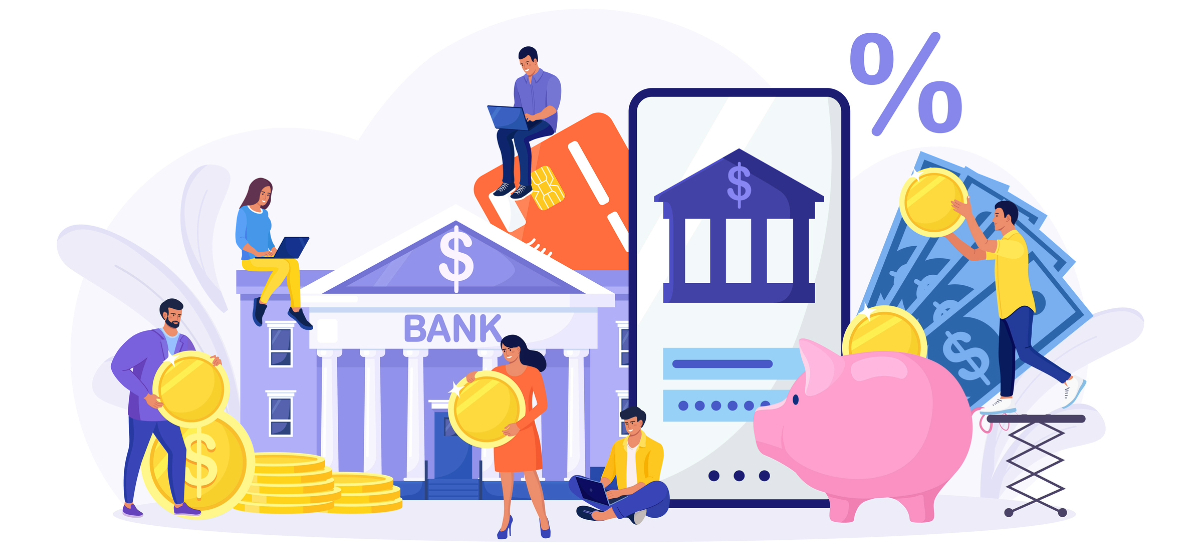What does it mean to be Unbanked vs. Underbanked?

With over 4,000 banks and just under 5,000 credit unions scattered across the country, it’s hard to believe consumers don't use at least one financial institution. However, this is very common, with 25 percent of the population labeled as unbanked or underbanked. But what's the difference between these two types of customers?
The unbanked don't affiliate themselves with a bank or credit union in any way. In the most recent FDIC survey, this group makes up around 4.5 percent of U.S. households - approximately 5.9 million U.S. households.
Underbanked individuals have an open checking or savings account but lack adequate access to other traditional financial services. According to the FDIC, they make up 14.1 percent of the population - approximately 18.7 million U.S. households.
As a result, both of these demographics tend to tap into alternative financial services. These include short-term payday loans, check-cashing services, and prepaid debit cards. But distinguishing between the two groups is crucial.
Keep reading below and gain a better insight into working with the unbanked and underbanked by understanding their motivations, determining where they take their business, and utilizing alternative credit tools to help identify the customer base.
Definition of Unbanked
The term "unbanked" refers to adults who do not use banking services many people consider "essential," such as having a checking or savings account or a debit card with a bank or credit union. Although this problem can originate from individuals' lack of access to financial institutions, others consciously avoid them. The FDIC lists four main reasons for this:
- Not having enough money to meet minimum balance requirements
- The desire for more privacy
- A lack of trust in banks and credit unions
- The cost of bank account fees is too steep
It's important to note that large swaths of unbanked people tend to fall within lower-income/less-educated demographics. As a replacement to financial institutions, these households primarily use prepaid cards to pay bills or receive income, in addition to non-bank money orders, check cashing, money transfer services, and use of non-bank credit.
Definition of Underbanked
The term "underbanked" was coined to describe people with bank accounts who frequently rely on alternative financial services such as money orders, check-cashing services, payday loans rather than traditional loans, and credit cards to handle their finances and pay for expenses. This could be due to limited access to affordable banking services or simply because they prefer alternative financial options.
Underbanked households represent a much larger piece of the pie than unbanked households, with more than 1 in 6 Americans falling into it. The reasonings for this include poor past financial behavior, weak or absence of credit history, and lack of convenient access to financial institutions.
Around 33 percent of Millennials are classified as underbanked, making them the demographic group most likely to fall into this category. Despite distinct differences between the two groups, businesses often treat Millennials and non-millennials similarly when providing financial services.
How to reach the Unbanked and Underbanked
Due to the inclination of unbanked and underbanked individuals to use alternative financial options, reaching out to these nearly "credit invisible" customers can be challenging. As a result, an increasing number of large retailers offer services to assist those lacking credit histories, such as debit card options for online shopping and electronic bill payment.
Amazon Cash is an example of such a service, allowing individuals to load money onto their accounts at retail locations for use with their debit cards instead of cash. In addition, financial companies are providing alternative credit data to evaluate payment histories and creditworthiness when applying for loans. Microbilt offers a range of tools to aid in alternative credit decision-making, so be sure to check out the useful suite of products.
